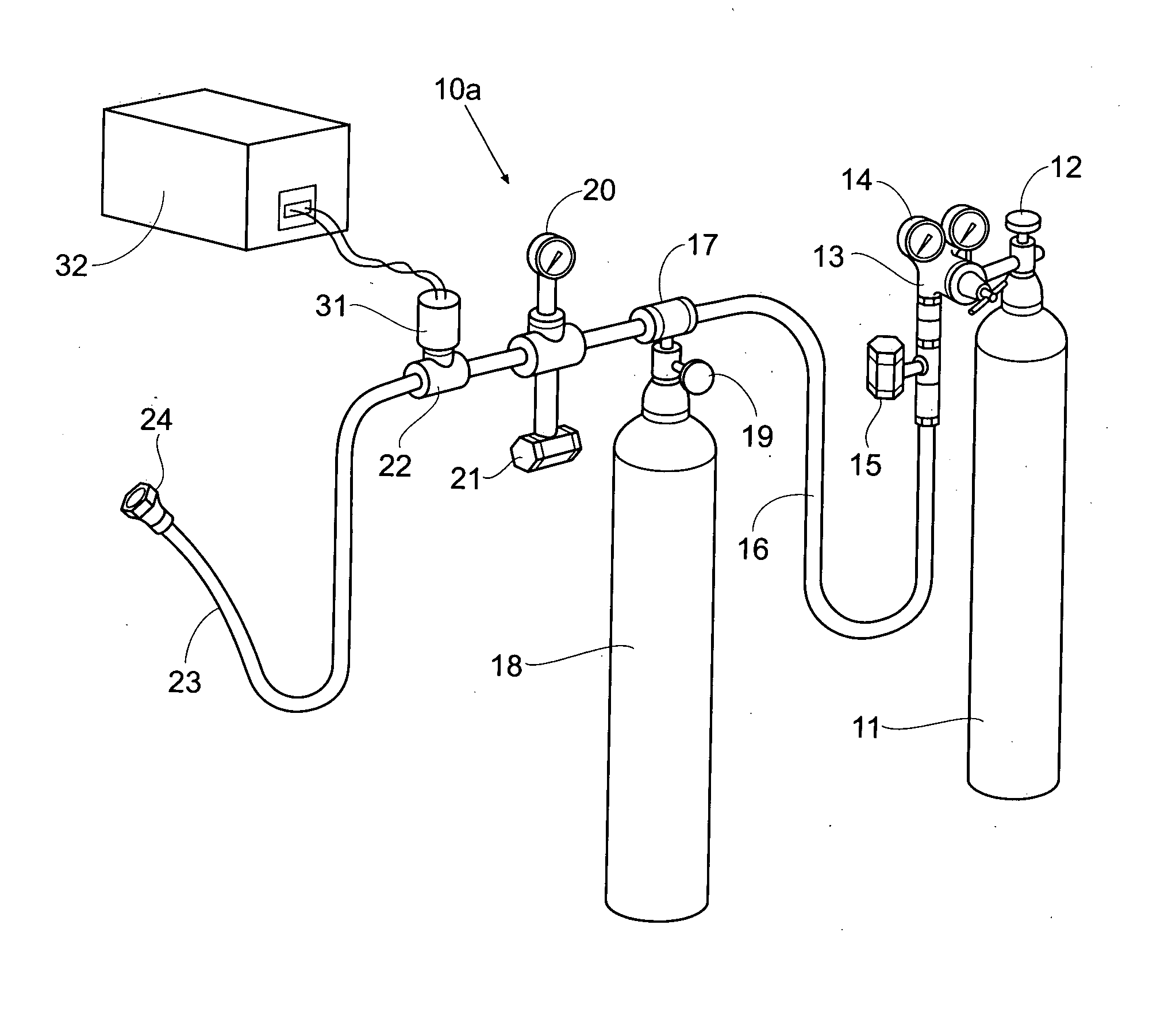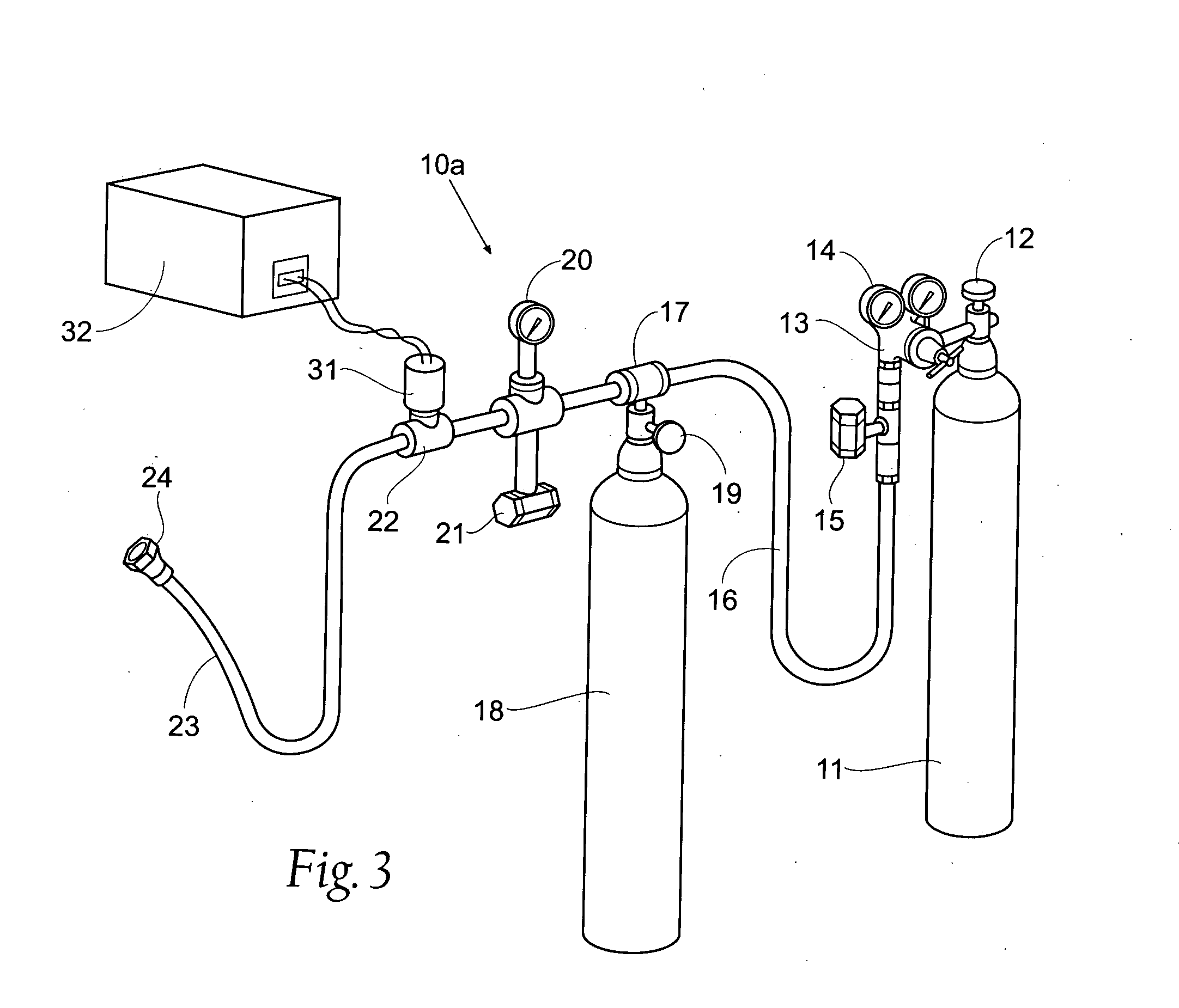Marine engine corrosion prevention system
a corrosion prevention and marine engine technology, applied in the direction of machines/engines, liquid handling, packaging goods types, etc., can solve the problems of small engine heat dissipation, corrosive nature of cooling fluid (i.e. water), and marine engine operating in salt-water environment, and achieves relatively simple and short design, effective reduction of corrosion tendency, and easy practice
- Summary
- Abstract
- Description
- Claims
- Application Information
AI Technical Summary
Benefits of technology
Problems solved by technology
Method used
Image
Examples
Embodiment Construction
[0029] Although the disclosure hereof is detailed and exact to enable those skilled in the art to practice the invention, the physical embodiments herein disclosed merely exemplify the invention that may be embodied in other specific structure. While the preferred embodiment has been described, the details may be changed without departing from the invention, which is defined by the claims.
[0030] Referring now to FIG. 1, reference numeral 10 is used to indicate the apparatus of the present invention. The first component includes a cylindrically shaped tank 11 containing a supply of inert gas. Preferred inert gases for the purpose of the present invention include helium and nitrogen. The inert gas is retained within tank 11 under high pressure, and when it is desired to use the apparatus, valve 12 is opened to introduce a supply of gas into the system herein after described. A conventional pressure regulator 13, having the usual pressure gauge 14, is provided in the system 10 adjacen...
PUM
| Property | Measurement | Unit |
|---|---|---|
| pressure | aaaaa | aaaaa |
| pressure | aaaaa | aaaaa |
| corrosion | aaaaa | aaaaa |
Abstract
Description
Claims
Application Information
 Login to View More
Login to View More - R&D
- Intellectual Property
- Life Sciences
- Materials
- Tech Scout
- Unparalleled Data Quality
- Higher Quality Content
- 60% Fewer Hallucinations
Browse by: Latest US Patents, China's latest patents, Technical Efficacy Thesaurus, Application Domain, Technology Topic, Popular Technical Reports.
© 2025 PatSnap. All rights reserved.Legal|Privacy policy|Modern Slavery Act Transparency Statement|Sitemap|About US| Contact US: help@patsnap.com



